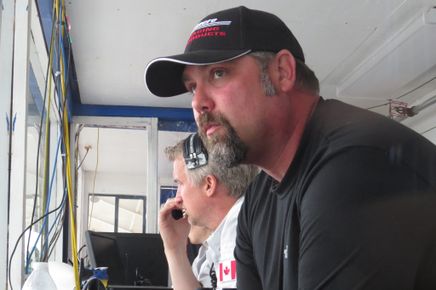Putting Schedule Genie Back In The Bottle Rubs NASCAR Fans The Right Way

As more and more fans in other time zones began watching NASCAR events, fewer and fewer of them wanted to do that watching early in the morning.
Guest Column By Cathy Elliott
If there is one thing the tale of Aladdin and his magic lamp from “One Thousand and One Nights” has taught us, it is that no matter how hard you try, or how good your intentions are, you can never put a genie back into a bottle once he’s been set free.
Oh, really? Judging from an announcement made on Wednesday, October 7 regarding the 2010 NASCAR Sprint Cup Series race schedule, NASCAR has decided to do just that.
There is a reason why roosters crow at sunrise, why bears crawl into caves for a long winter’s nap and why when temperatures head south, geese follow suit. All creatures great and small come into this world retrofitted with an internal clock that tells us what to do and when to do it.
A farmer, for example, senses those first glimmers of light in the eastern sky and knows daybreak, and the beginning of his workday, is fast approaching. A factory worker, on the other hand, hears a whistle blow and knows his work day is drawing to its close.
Every 9-to-5 employee is conditioned to smile when his office clock signals five o’clock on Friday afternoon. It didn’t come to be called “Happy Hour” by accident, you know.
And when that same hour hand hits one o’clock on Sunday afternoon, the backs of NASCAR fans’ necks begin to prickle. They know it’s time for the race to start.
At least that’s the way it used to be. But NASCAR underwent the mother of all growth spurts, outgrowing the confines of its early fan base faster than a baby outgrows its one-sies. The sport got so big so fast that print publications and television networks and even the geographic boundaries of America itself had to scramble to keep up with it.
Folks in Alabama back in the 1960s may have never envisioned a day when folks in the deserts of Arizona would embrace “their” sport of stock car racing. Carolinians probably took the same view of Californians.
But that’s exactly what happened. As more and more fans in other time zones began watching NASCAR events, fewer and fewer of them wanted to do that watching early in the morning.
The result was an attempt to satisfy as many fans as possible. NASCAR and its TV broadcast partners -- including FOX, ABC, ESPN and TNT -- made a number of adjustments to the start times of races. East Coast races, which in years past may have seen their green flags as early as noon, now sometimes got under way as late as 3 p.m.
Viewers began complaining that they sometimes missed those oh-so-important green flags because they weren’t always entirely certain when the race actually started.
On a side note, if anyone has ever found a way to please all of the race fans, all of the time, I surely do wish they would share that secret with me. Maybe if NASCAR outlawed restrictor plates, put rockets in the rear ends and installed those hydraulic-looking legs on the cars like they have in the “Transformers” movies so they could just hop over the competition instead of having to go around it, that might help. But I don’t see that happening.
NASCAR took a less drastic but very satisfactory approach. In the October 7 press conference, NASCAR Chairman and CEO Brian France said that, “ … Fans have been asking for earlier and more consistent start times, and we are making this change for our fans, beginning with the Daytona 500 next February.”
“It’s become clear to us that traditional, early Sunday afternoon start times are favored by NASCAR fans who both attend races and watch on television,” added FOX Sports Chairman David Hill. “NASCAR, perhaps more than any other sport, belongs to the generations of fans who have passed on their passion, father to son, mother to daughter, so whatever we can do to make them feel better connected to the sport they love should be done.”
When asked to predict the outcome of the decision to standardize start times, Mr. Hill went on to jokingly invoke the ancient principle of Roman divination.
“It involves killing a chicken, and then looking at the entrails. And the great Roman Empire used that to base their decisions on whether to go to war, whether to go to peace, what have you. I've got a cage of chickens in the corner of my office, and that's what they're telling me,” he said.
Eewww.
(Settle down, children. He was just kidding.)
It takes courage for a sports entity of NASCAR’s magnitude to admit that just maybe, it made a misstep. It takes even more courage to take appropriate and decisive action to correct that misstep.
So Mr. Hill’s analogy, while perhaps not well-suited for the more squeamish among us, perfectly encapsulates the tenacious spirit NASCAR has personified since it first hit the beach in Daytona more than a half century ago.
No guts; no glory.
It seems that NASCAR and its TV partners may actually have succeeded in finding a way to put that unpredictable genie back in the bottle.
For once, he went willingly ... and he’s happy to be there.
